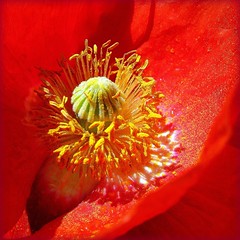
![]() photo credit: Robert in Toronto
photo credit: Robert in Toronto
Allergy season is upon us as we enjoy the marvels of spring.
This year’s late spring is bringing a “pollen explosion” wherein unprecedented levels of pollen have been measured across the Eastern United States this April. “The sheer number of particles in the air was enough to trigger symptoms even in patients who didn’t have allergies, just because of the irritant effect,” said Dr. Jay Portnoy, the chief of allergy, asthma and immunology at Children’s Mercy Hospitals and Clinics in Kansas City, Missouri, US.
Due to the constant cool temperatures in February and March, which prevented the “gradual, species-by-species release of pollen, the trees stored up until the weather got balmy. Then they all released at once.” Dr. Portnoy’s patients complained that their usual medications were not working. In effect, this is a bad allergy season for the 40 million Americans who have allergies because the “exposure to the pollen was so great that it overwhelmed the medicine,” explained Dr. Portnoy.
We express our empathy to all allergy sufferers by sharing with you these 13 beautiful photos of pollen allergens captured by Swiss photographer Martin Oeggerli using modern scanning-electron microscope (SEM) technology and colorization techniques. Here are some types of pollen that cause sneezing, sniffles, itchy eyes, itchy mouth, oral swelling, redness and misery in many parts of the world:
- Willow pollen
- Alder pollen
- Silver Leaf Oak pollen
- Pine Pollen
- Forget-me-not pollen
- White Clover pollen
- Silk Tree pollen
- Acanthus pollen
- Geranium pollen
- Snowball Plant pollen
- Quince pollen
- Pistia pollen
- Venus Flytrap pollen
Researchers predict a rising trend for ragweed growth and pollen production due to both global warming and increased carbon dioxide. This would prolong the allergy season and cause more misery for allergy sufferers.
For allergy relief and control, consult with your physician or allergist regarding antihistamine sprays, pills and eye drops, corticosteroids, and allergy shots. “For most people with allergies, it is possible to achieve good control over symptoms, and it is possible to have a good quality of life, including outdoor activities,” Dr. Rebecca Piltch said as the allergist in San Rafael, California. “So many people suffer for years or sometimes even decades, and that isn’t necessary most of the time.”
The Mayo Clinic comes to your rescue with helpful advice to alleviate the misery of allergy to pollen and other allergens.
